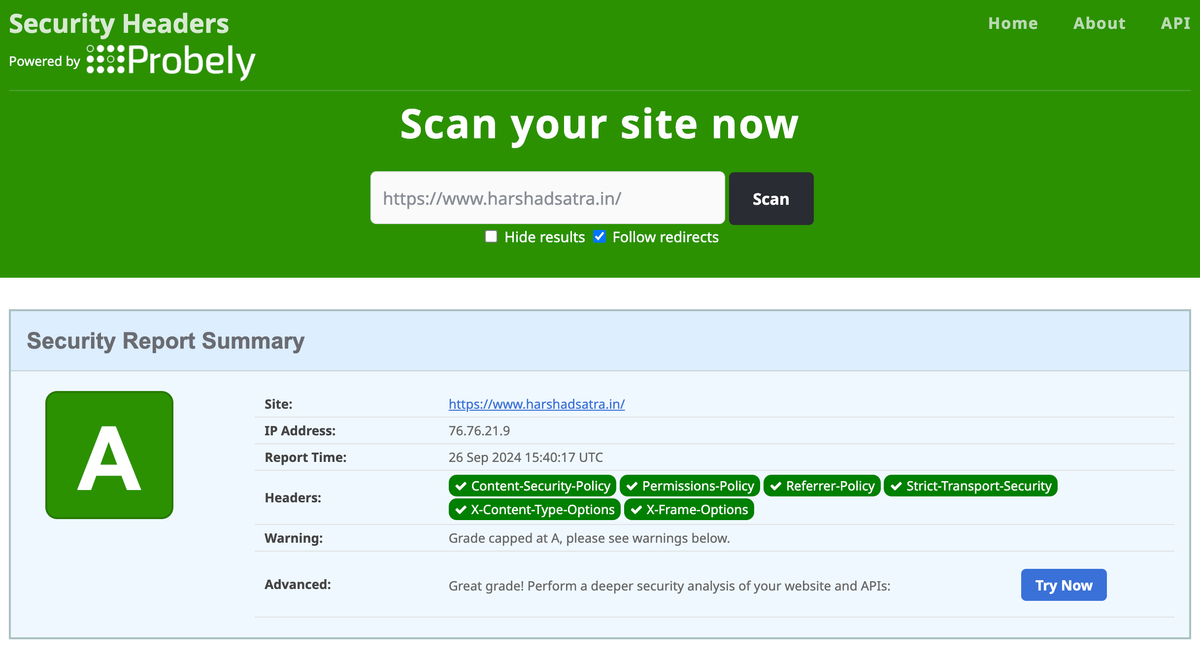Level Up Your Website Security with Powerful Headers! ️

In today's digital world, website security is paramount. One often overlooked but highly effective way to enhance your defenses is by implementing security headers.
These are special directives sent by your server to the browser, instructing it on how to handle sensitive data and prevent common attacks. Let's dive into some key security headers and their pros and cons:
1. Content-Security-Policy (CSP):
- Advantages: Blocks unauthorized scripts, styles, and images, preventing XSS attacks and data injection.
- Disadvantages: Initial setup requires careful configuration to avoid breaking functionality.
- Example:
Content-Security-Policy: script src 'self' https://cdn.example.com; style src 'self'
2. Permissions-Policy:
- Advantages: Granular control over browser features like geolocation, camera, and microphone access, reducing the risk of unauthorized data collection.
- Disadvantages: Relatively new feature with limited browser support at the moment.
- Example:
Permissions-Policy: geolocation (self), camera (), microphone ()
3. Referrer-Policy:
- Advantages: Controls how much information is sent in the referrer header, preventing unintended leaks of sensitive data.
- Disadvantages: Can limit functionality of analytics tools that rely on referrer data.
- Example:
Referrer-Policy: no-referrer-when-downgrade(prevents sending referrer info on insecure connections)
4. Strict-Transport-Security (HSTS):
- Advantages: Enforces HTTPS connections, protecting against man-in-the-middle attacks and data sniffing.
- Disadvantages: Requires careful implementation to avoid users getting stuck on insecure connections due to misconfiguration.
- Example:
Strict-Transport-Security: max-age=31536000; includeSubDomains; preload(enforces HTTPS for a year for all subdomains and preloads the policy)
5. X-Content-Type-Options: nosniff
- Advantages: Prevents MIME sniffing vulnerabilities, where attackers might trick the browser into interpreting a malicious file type incorrectly.
- Disadvantages: No known downsides.
- Example:
X-Content-Type-Options: nosniff
6. X-Frame-Options:
- Advantages: Controls whether your website can be embedded within a frame (iframe) of another website, preventing clickjacking attacks.
- Disadvantages: Can limit certain functionalities that rely on iframes (e.g., embedded widgets).
- Example:
X-Frame-Options: DENY(prevents website from being loaded in any iframe)
Test Your Security Headers:
Ready to see how your website fares? Head over to securityheaders.com to scan your site and identify any missing or misconfigured headers.
By implementing these security headers strategically, you can significantly enhance your website's security posture and protect your users from a wide range of threats.
If you are interested in implementing the security headers you can reach out to us at Shwez Studio and share your website link



